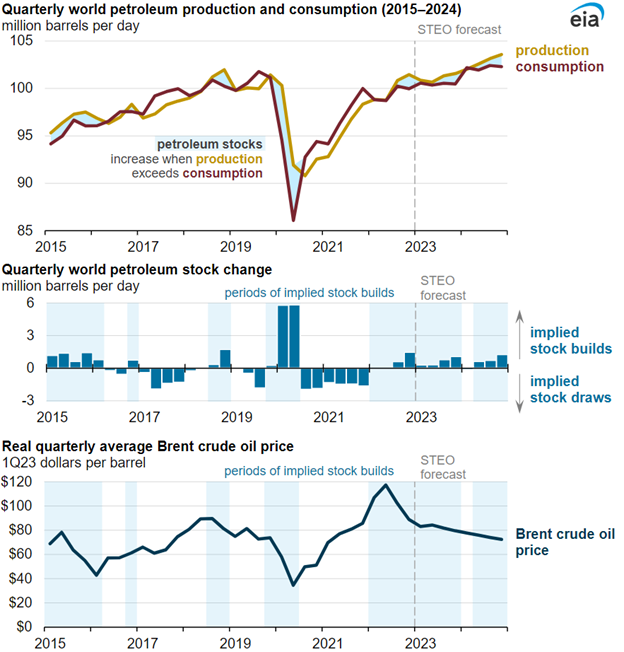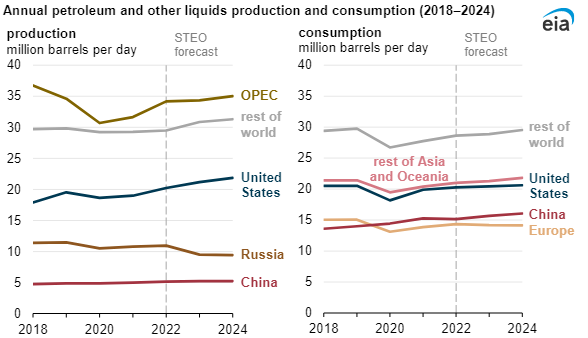
Short-Term Energy Outlook Takeaways
In January, the Energy Information Administration (EIA) released its 2023 Short-Term Energy Outlook. Although demand is expected to rise by 50,000 barrels per day (bpd), production is expected to outpace demand. The EIA predicts Brent crude oil prices will fall to $83 per barrel in 2023, dropping further to $78/b in 2024. This is down from the 2022 high of $101/b. Below are three key factors to consider:

Russian Import Ban
In December 2022, the EU banned seaborn imports of Russian crude oil. On February 5, an additional ban on seaborn imports of Russian petroleum products will go into effect. In 2022, Russia produced more than 10% of the world’s oil. The bans are expected to disrupt the global supply of oil.
The EIA states, “We assume Russia will be able to reroute some of its petroleum exports subject to EU sanctions. But we do not expect all its refined product exports will find new destinations because of limited clean tanker availability, which will cause Russia to reduce their crude oil inputs to refineries and for their crude oil production to continue to decline. However, Russia's ability to reroute its petroleum product exports depends on other countries' willingness to buy Russia's petroleum and the flexibility of global petroleum product supply chains.”
Supply Growth
The largest increase in production is expected to come from the U.S. However, oil producers are experiencing challenges related to lower capital investments. While the total impact of the lower investments is uncertain, the Permian region is expected to carry production volumes to record annual highs in both 2023 and 2024.
OPEC is also expected to contribute to supply growth. In 2022, OPEC contributed 34% of global petroleum liquids. This is in part due to the U.S. lifting sanctions on Venezuela. As a result, Venezuela can now participate in OPEC production agreements. The country is expected to increase its production as a result. Nevertheless, if OPEC enacts production cuts, it will result in higher pricing than forecasted.
Other countries expected to increase production include Canada, Brazil, and Norway. Collectively, they are expected to increase output by 12% by 2024.
Reopening China
China’s lockdowns to combat COVID-19 outbreaks in 2022 ultimately led to a decrease in oil consumption. The EIA cites the reopening as an area of uncertainty stating, “The pace and magnitude of China's efforts to reopen and loosen mobility restrictions present another considerable uncertainty for global oil markets. China's consumption could be less than we forecast at first if rising COVID-19 cases cause significant disruptions to economic activity and travel, particularly in early 2023.”
Even with the lockdowns, China was responsible for 15% of global petroleum consumption in 2022. If China’s consumption in 2024 exceeds expectations it will almost certainly impact pricing.

The energy industry is constantly changing based on many variables including but not limited to domestic policy, global and geopolitical events. At Peoples Company, our Energy Management division is a premier one-stop shop for all your oil, gas, and renewable energy management needs. We are committed to staying apprised of industry conditions so that you can focus on what you do best. If you would like to learn more about our services, or if you are just interested in learning more about the energy industry, please feel free to reach out to us at EnergyManagement@PeoplesCompany.com or call 918.236.0866.










